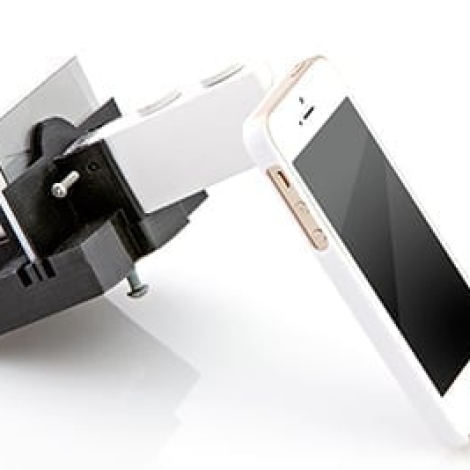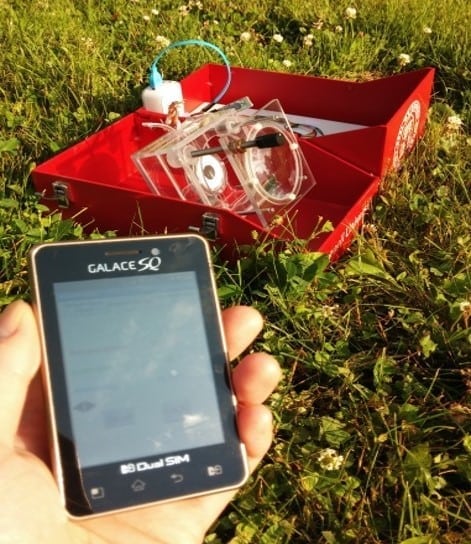Diagnosing malaria with a cellphone add-on has become a product category. Multiple competitors have entered the field, the latest of which is MOPID, the mobile-optical-polarization imaging device, by researchers at Texas A&M University. MOPID claims to provide the same level of accuracy as benchtop spectroscopy, but with the speed and low cost of a handheld mobile phone. ASME.org reports:
The actual imaging is pretty quick and depends on how many samples you take. “Typically the blood sample is on a cartridge,” Cote explains further. “The device images a blood sample using polarized light that can detect the malaria parasite byproduct, the hemozoin crystals, which appear as bright dots in the image. That’s a key indicator of infection.”
The team is still developing the algorithms for automated detection through an app that would take the image and automatically count the number of red blood cells and malarial parasites over different fields of view. “The idea is there should be enough to make the decision to diagnose. We can automate that process using the app,” says Cote. “It would probably take longer to collect the blood than to run the algorithm,” he adds.
The device may cost only $50 when it reaches the market. And when that happens, it will compete with other smartphone malaria detectors such as Lifelens, xRapid, and Matibabu. The new marketplace for mobile diagnosis could change the way malaria is detected in rural areas where clinics and microscopes are scarce.


great service through technology